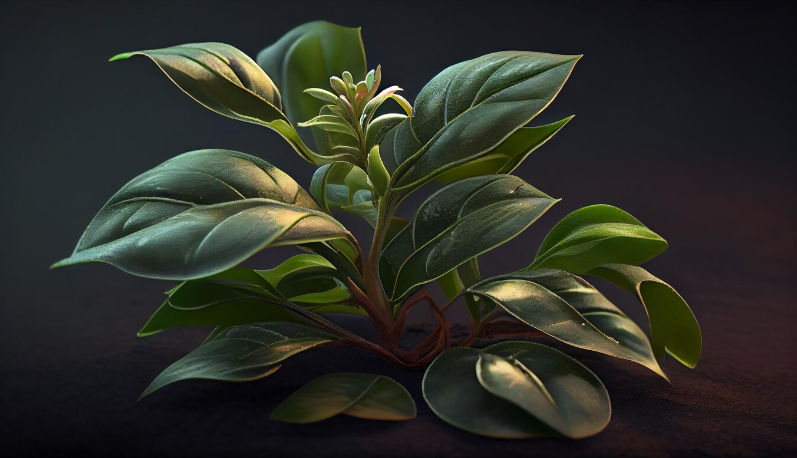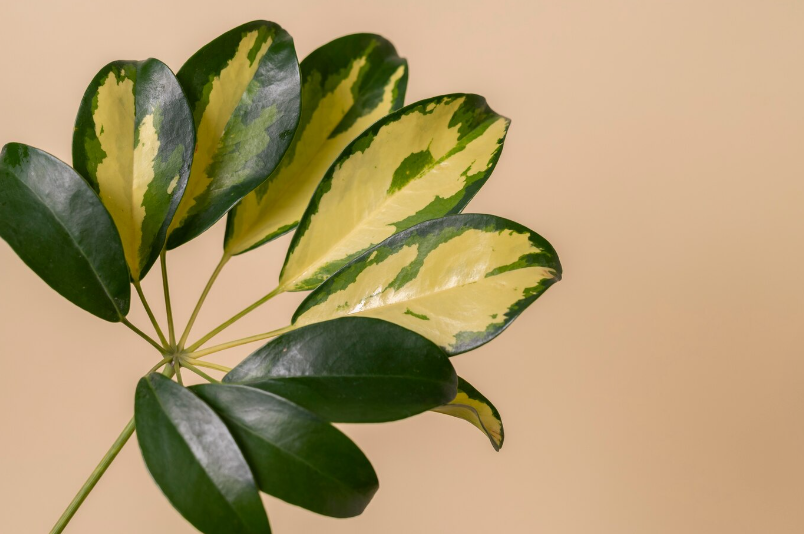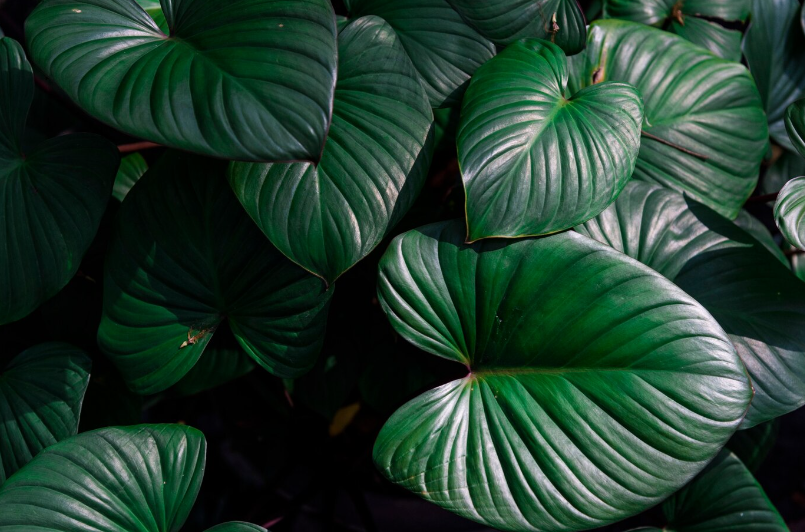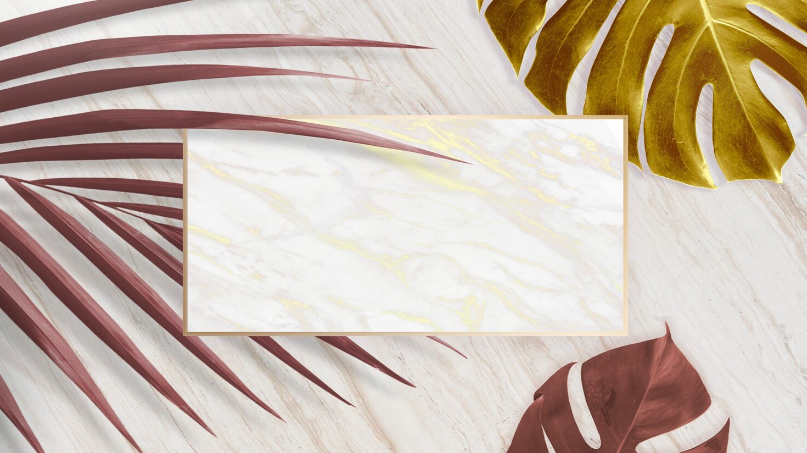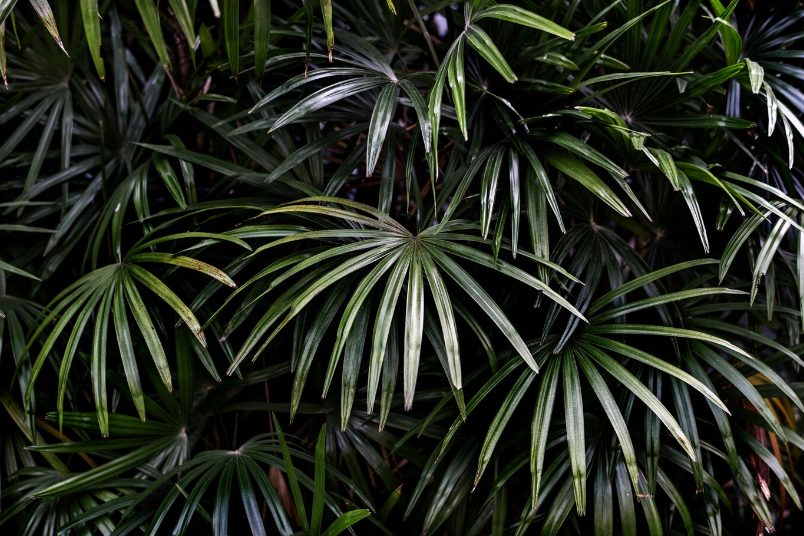Watering Tips for Philodendron Cordatum and Pink Princess Plants
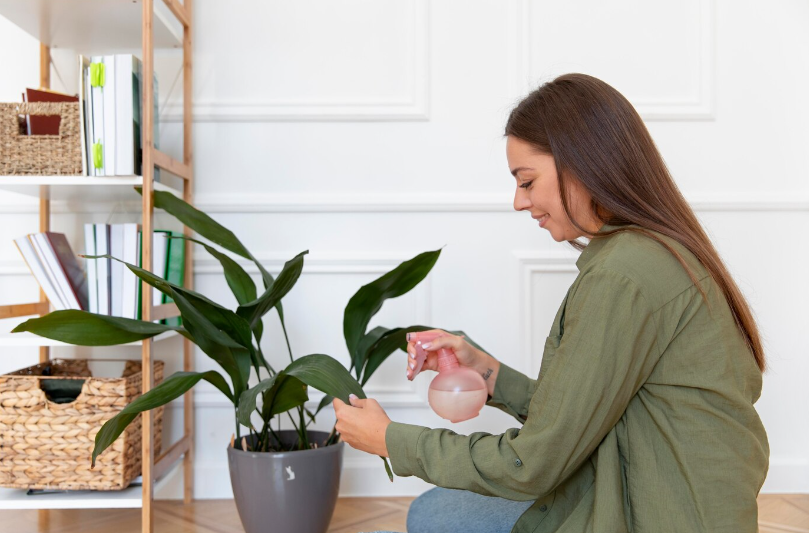
Are you tired of your Philodendron Cordatum or Pink Princess plants not thriving? Look no further! Our watering essentials are here to help you achieve lush and vibrant foliage.
Proper watering is crucial for the health and happiness of your plants. With our carefully crafted watering essentials, you can ensure that your Philodendron Cordatum and Pink Princess plants receive just the right amount of water they need.
Our specially designed watering cans make watering a breeze. Their ergonomic handles and precision spouts allow for easy and controlled watering, preventing overwatering or underwatering.
Additionally, our moisture meters will help you monitor the soil moisture levels with accuracy. You’ll never have to guess if it’s time to water or not. Keep your plants perfectly hydrated.
Remember, a healthy plant starts with proper watering. Invest in our watering essentials today and see the difference in your Philodendron Cordatum and Pink Princess plants!
Tailoring Watering to Specific Philodendron Needs
When it comes to watering your Philodendron Cordatum and Pink Princess plants, it’s important to understand that each variety has its own specific needs. Tailoring your watering routine to these needs will help ensure the health and vitality of your plants.
Philodendron Cordatum:
The Philodendron Cordatum is a popular choice for indoor plant enthusiasts due to its heart-shaped, glossy leaves. To keep your Philodendron Cordatum thriving, it is essential to water it properly.
Watering Frequency: Philodendron Cordatum prefers slightly moist soil. Watering once a week is usually sufficient, but make sure to check the top inch of soil before watering again. If it feels dry, it’s time to water.
Watering Technique: When watering, ensure that the water reaches the roots of the plant. Avoid overwatering, as this can lead to root rot. Allow excess water to drain out of the pot and remove any standing water to prevent waterlogging.
Tip: Mist the leaves of your Philodendron Cordatum occasionally to provide additional humidity, as it naturally grows in tropical rainforests.
Pink Princess:
The Pink Princess Philodendron is a unique and striking plant with its variegated leaves featuring shades of pink. To maintain the vibrant colors and health of your Pink Princess, follow these watering guidelines.
Watering Frequency: Pink Princess requires slightly more water compared to other Philodendron varieties. Water every 5-7 days, but again, always check the soil moisture level before watering. If the top inch of soil is dry, it’s time to water.
Watering Technique: When watering, ensure that the water is evenly distributed throughout the pot. Make sure not to let the plant sit in excess water, as this can lead to root rot. Use well-draining soil to prevent waterlogged conditions.
Tip: Pink Princess appreciates higher humidity levels. Consider placing a pebble tray filled with water near your plant or using a humidifier in the room.
By tailoring your watering routine to the specific needs of your Philodendron Cordatum and Pink Princess plants, you can provide them with optimum conditions for growth and ensure their long-term health.
Determining Water Requirements for Pink Princess and Cordatum Philodendrons
Proper watering is essential for maintaining the health and beauty of your Pink Princess and Cordatum Philodendrons. These popular indoor plants require a careful balance of moisture to thrive and flourish.
When determining the water requirements for your Pink Princess and Cordatum Philodendrons, it’s important to consider a few key factors. Firstly, it’s crucial to understand that these plants prefer consistently moist soil but not waterlogged conditions. Overwatering can lead to root rot and other issues, so it’s best to err on the side of caution.
The frequency of watering will largely depend on the size of your plant and the environmental conditions in which it is situated. As a general rule, Pink Princess and Cordatum Philodendrons benefit from being watered when the top inch of soil feels dry to the touch. However, it’s important to note that different factors can influence how quickly the soil dries out, such as humidity levels, temperature, and the pot’s drainage capabilities.
Another important factor to consider is watering consistency. It’s ideal to water your Pink Princess and Cordatum Philodendrons in a consistent manner rather than giving them occasional heavy soakings. Consistent watering helps establish a healthy root system and promotes overall plant health.
Lastly, it’s important to keep in mind that Pink Princess and Cordatum Philodendrons may require less water during colder months or when they are in a period of dormancy. Adjusting your watering schedule accordingly can help prevent overwatering and ensure your plants remain healthy throughout the year.
By understanding and meeting the specific water requirements of your Pink Princess and Cordatum Philodendrons, you can ensure that they thrive and bring beauty to your indoor space for years to come.
Frequency and Amount of Watering for Optimal Growth
To ensure the optimal growth of your Philodendron Cordatum and Pink Princess plants, it is crucial to understand the frequency and amount of watering they require. Both of these plants thrive in well-draining soil and prefer to be kept slightly moist, but not waterlogged.
Watering these plants once a week is generally sufficient, but always remember to check the moisture level of the soil before watering. Stick your finger about an inch deep into the soil, and if it feels dry, it’s time to water. However, if it still feels slightly moist, it is better to wait a little longer before watering again.
When watering, be sure to provide enough water to thoroughly saturate the root ball. This ensures that the water reaches the roots and promotes healthy growth. However, be careful not to overwater, as excessive moisture can lead to root rot and other issues.
It is important to note that the watering needs of these plants may vary depending on various factors, such as the size of the pot, the humidity of the environment, and the amount of sunlight they receive. Therefore, it is always best to observe your plants closely and adjust the watering schedule accordingly.
Remember, maintaining a consistent watering routine is key to keeping your Philodendron Cordatum and Pink Princess plants happy and thriving. By providing them with the right amount of water at the right frequency, you can ensure optimal growth and enjoy their beauty for years to come.
Identifying Your Philodendron’s Watering Needs: Signs to Look For
Proper watering is essential for the health of your Philodendron Cordatum and Pink Princess plants. Knowing how to identify their watering needs can help you ensure that you are providing the right amount of water.
- Wilting leaves: If your Philodendron’s leaves are drooping or wilting, it may be a sign that it needs more water. Check the soil moisture level and adjust your watering accordingly.
- Yellowing leaves: Yellowing leaves can indicate overwatering. If you notice that the lower leaves of your Philodendron are turning yellow or becoming mushy, you may be watering it too frequently.
- Brown, crispy edges: Dry and crispy leaf edges are a sign of underwatering. If the edges of your Philodendron’s leaves are turning brown, it may need more frequent watering.
- Root rot: Overwatering can lead to root rot, which can be identified by a foul smell, mushy roots, and yellowing or drooping leaves. If you suspect root rot, it’s important to adjust your watering habits and repot your plant if necessary.
- Moisture meter: Using a moisture meter can help you accurately determine the moisture level of your Philodendron’s soil. This can be especially helpful if you’re unsure about when to water your plant.
By paying attention to these signs and adjusting your watering habits accordingly, you can ensure that your Philodendron Cordatum and Pink Princess plants thrive and stay healthy.
Techniques and Strategies for Effective Watering
Proper watering techniques are essential for the health and well-being of your Philodendron Cordatum and Pink Princess plants. Here are some tips and strategies to ensure you are watering your plants effectively:
- Consistent watering schedule: Establish a regular watering routine for your plants. Stick to a specific day or days each week to water your plants. This will help prevent overwatering or underwatering and maintain a consistent moisture level in the soil.
- Monitor soil moisture: Check the moisture level of the soil before watering. Stick your finger about an inch into the soil and check if it feels dry. If it is still moist, hold off on watering. Only water your plants when the soil is dry to avoid waterlogging the roots.
- Water thoroughly: When it is time to water your plants, make sure to water them thoroughly. Water until you see water draining out of the bottom of the pot. This ensures that the entire root system is properly hydrated.
- Use room temperature water: Avoid using cold or hot water when watering your plants. Room temperature water is ideal as extreme temperatures can shock the plant and affect its overall health.
- Avoid misting: While misting can add humidity to the air around your plants, it is not an effective way to water them. It only provides temporary relief and does not reach the roots. Instead, focus on watering the soil directly.
- Adjust watering during seasons: Plants’ water needs may vary depending on the season. During hotter months, you may need to water more frequently to compensate for increased evaporation. In cooler months, reduce watering to prevent waterlogged soil.
- Pay attention to drainage: Ensure that your pots have proper drainage holes to allow excess water to escape. This prevents water from accumulating at the bottom and potentially causing root rot.
By following these techniques and strategies, you can ensure that your Philodendron Cordatum and Pink Princess plants receive the right amount of water and thrive in your care.
The Best Methods for Watering Philodendrons: Top vs. Bottom Watering
When it comes to keeping your beloved Philodendron Cordatum and Pink Princess plants healthy and thriving, proper watering techniques are crucial. Two of the most popular methods are top watering and bottom watering, but which one is best for your plants? Let’s take a closer look at both options.
Top Watering:
The most common method, top watering involves pouring water directly onto the soil surface of your Philodendron plants. This allows the water to reach the roots quickly and efficiently. It’s important to water until you see the excess water drain out from the bottom of the pot. This ensures that all of the roots receive an adequate amount of water and that they aren’t sitting in soggy soil, which can lead to root rot.
Pros:
- Easy and convenient
- Allows you to monitor the moisture level of the soil
Cons:
- Increased risk of overwatering
- Can lead to root rot if not done correctly
Bottom Watering:
Bottom watering involves placing your potted Philodendrons in a tray or saucer filled with water. The plants will absorb water through the drainage holes in the bottom of the pot, allowing the roots to take up exactly what they need. This method is especially beneficial for plants with sensitive foliage, such as the Pink Princess, as it avoids wetting the leaves.
Pros:
- Reduces the risk of overwatering
- Minimizes the chance of leaf rot
- Great for plants with sensitive foliage
Cons:
- Requires more time and attention
- Less control over moisture levels
Ultimately, the best watering method for your Philodendron plants will depend on your individual preferences, the plant’s specific needs, and your watering routine. Experiment with both top and bottom watering and observe how your plants respond. Remember, maintaining the right balance of moisture is crucial for a healthy and thriving Philodendron Cordatum or Pink Princess plant.
Misting Practices for Pink Princess Philodendrons: Benefits and Techniques
Misting your Pink Princess Philodendrons can provide a range of benefits for these stunning plants. The delicate and unique foliage of the Pink Princess Philodendron requires a higher level of humidity to thrive, and misting can help recreate the ideal environment for their growth.
The benefits of regularly misting your Pink Princess Philodendrons include:
- Improved Leaf Health: Misting helps prevent the leaves from drying out and becoming brittle, promoting overall leaf health and preventing leaf drop.
- Enhanced Growth: Pink Princess Philodendrons thrive in a moderate to high humidity environment. Misting increases the humidity around the plants, stimulating growth and promoting lush foliage.
- Prevention of Pest Infestations: Misting can help deter common pests that thrive in dry conditions, such as spider mites. Regular misting keeps the leaves clean and creates an unfavorable environment for pests.
When misting your Pink Princess Philodendron, it is important to follow these techniques:
- Use Filtered Water: The quality of water is essential. Avoid using tap water, as the chemicals used in water treatment can harm the sensitive leaves. Instead, use filtered or distilled water.
- Mist Early in the Day: It is best to mist your plants in the morning to allow time for the water to evaporate before evening. This prevents excessive moisture, which could lead to fungal diseases.
- Mist Lightly and Evenly: Use a fine mist spray bottle to evenly distribute mist over the leaves. Avoid drenching the leaves, as excessive moisture can promote the growth of mold and bacteria.
- Mist until Water Drips: Mist the plant until you start to see water droplets forming on the leaves. This ensures that the humidity around the plant is increased and helps create an ideal environment for growth.
By incorporating regular misting practices into your care routine, you can enjoy healthy and vibrant Pink Princess Philodendrons. Remember to monitor the moisture levels and adjust misting frequency based on the specific needs of your plants.
How to Avoid Overwatering: Recognizing the Signs
Overwatering can be detrimental to your philodendron cordatum and pink princess plants. While it’s essential to provide them with enough moisture, too much water can lead to root rot, diseases, and overall poor plant health. In this section, we will help you recognize the signs of overwatering, so you can prevent it and keep your plants thriving.
1. Yellowing Leaves: One of the most common signs of overwatering is yellowing leaves. If the leaves start turning yellow and feel mushy to the touch, it’s a clear indication that the roots are drowning in water. Let the soil dry out before watering again.
2. Wilting and Drooping: When plants receive too much water, their roots become waterlogged, preventing them from getting the necessary oxygen. This lack of oxygen can cause the leaves to wilt and droop. If you notice your plants looking limp and lifeless, it’s likely due to overwatering.
3. Fungus or Mold Growth: Excessive moisture creates the perfect environment for fungal and mold growth. If you see any fuzzy white or gray patches on the soil surface or near the base of your plants, it’s a sign of overwatering. Remove the affected soil and reduce the frequency of watering to prevent further growth.
4. Foul Odor: Overwatering can lead to a foul, musty smell emanating from the plant. This odor is a result of the excess water causing root rot and the growth of anaerobic bacteria. If your philodendron cordatum or pink princess plants emit an unpleasant smell, it’s a clear indication of overwatering.
5. Slow Growth and Yellowing Tips: Overwatering inhibits the plant’s ability to absorb nutrients, which can result in slow growth and yellowing tips. If your plants are not showing signs of new growth or the tips of the leaves are turning yellow, it’s time to reassess your watering routine.
To avoid overwatering, always check the moisture levels of the soil before watering. Stick your finger about an inch into the soil – if it feels dry, it’s time to water, but if it feels moist, hold off on watering. Additionally, make sure your pots have proper drainage holes to allow excess water to escape.
By recognizing the signs of overwatering and adjusting your watering habits accordingly, you can ensure the health and longevity of your philodendron cordatum and pink princess plants.
Enhancing Growth and Happiness of Your Philodendron
Your Philodendron Cordatum and Pink Princess plants deserve the best care to ensure their growth and happiness. Follow these essential tips to enhance their overall well-being.
1. Provide Adequate Water: Philodendrons thrive in moist soil, but be careful not to overwater them. Allow the top inch of soil to dry out before watering. Use filtered or distilled water to prevent mineral buildup.
2. Choose the Right Light: Philodendrons prefer bright, indirect light. Place them near a window with filtered sunlight. Avoid direct sunlight, as it can scorch their leaves. If your plant becomes leggy, it may need more light.
3. Maintain Proper Humidity: Philodendrons appreciate high humidity levels. You can increase humidity by placing a tray of water near the plant or using a humidifier. Misting the leaves with water also helps increase moisture levels.
4. Fertilize Regularly: Feed your Philodendrons with a balanced liquid fertilizer every month during the growing season (spring and summer). Follow the instructions on the fertilizer packaging for proper dilution and application.
5. Prune and Propagate: Regular pruning helps maintain the shape and compactness of your Philodendrons. Remove yellow or damaged leaves to promote new growth. You can also propagate your Philodendrons by taking stem cuttings and rooting them in water or soil.
6. Monitor for Pests: Keep a close eye on your Philodendrons for common pests like aphids and spider mites. If you notice any signs of infestation, treat them promptly with insecticidal soap or neem oil, following the instructions on the product label.
By providing proper watering, lighting, humidity, fertilization, and regular maintenance, you can ensure the optimal growth and happiness of your Philodendrons. Enjoy the beauty and rewards of having thriving plants in your home!
Key Factors in Keeping Your Pink Princess Philodendron Happy and Healthy
When it comes to caring for your Pink Princess Philodendron, there are several key factors that you should consider in order to keep it happy and healthy. These factors include proper watering, adequate lighting, and the right temperature and humidity levels.
1. Proper Watering: Pink Princess Philodendrons prefer to be kept evenly moist, but not overly wet. This means that you should water your plant when the top inch of soil feels dry to the touch. Avoid allowing the plant to sit in standing water, as this can lead to root rot.
2. Adequate Lighting: Pink Princess Philodendrons thrive in bright, indirect light. Place your plant near a north or east-facing window where it can receive filtered sunlight. Avoid placing it in direct sunlight, as this can scorch the leaves.
3. Temperature and Humidity: Pink Princess Philodendrons prefer temperatures between 65-75°F (18-24°C) during the day and slightly cooler temperatures at night. They also appreciate higher humidity levels, so consider using a humidifier or placing the plant on a tray filled with water and pebbles to increase humidity.
4. Fertilization: Pink Princess Philodendrons benefit from regular fertilization during the growing season. Use a balanced, water-soluble fertilizer diluted to half-strength every 2-4 weeks to provide the necessary nutrients.
5. Pruning and Propagation: Pink Princess Philodendrons can benefit from occasional pruning to promote bushier growth and remove any leggy or yellowing leaves. Additionally, these plants can be propagated through stem cuttings, which can be rooted in water or soil.
By following these key factors and providing the necessary care, you can ensure that your Pink Princess Philodendron remains vibrant and healthy for years to come.
Accelerating Growth: Tips for a Faster Growing Pink Princess
While water and nutrients are essential for the growth of all plants, there are some specific tips you can follow to accelerate the growth of your Pink Princess plant:
- Provide Adequate Lighting: Pink Princess plants thrive in bright, indirect light. Place your plant near a window where it can receive plenty of natural light to promote faster growth.
- Ensure Proper Humidity: Pink Princess plants prefer humid environments. Increase the humidity around your plant by using a humidifier or placing a water-filled tray near it to help accelerate growth.
- Use a Well-Draining Soil Mix: Pink Princess plants prefer well-draining soil to prevent root rot. Ensure that your plant is potted in a soil mix that allows excess water to flow out easily.
- Fertilize Regularly: Provide your Pink Princess plant with a balanced liquid fertilizer once a month during the growing season (spring and summer) to provide the necessary nutrients for faster growth.
- Prune Regularly: Regular pruning helps promote new growth and keeps the Pink Princess plant looking full and healthy. Trim any leggy or damaged stems to encourage the plant to grow faster and produce more leaves.
- Rotate the Plant: To ensure even growth, rotate your Pink Princess plant every few weeks to expose all sides of the plant to the light source.
- Avoid Overwatering: While regular watering is important, overwatering can lead to root rot and stunted growth. Allow the top inch of the soil to dry out before watering again.
By following these tips, you can provide the ideal conditions for your Pink Princess plant to grow faster and healthier, transforming it into a stunning centerpiece for your home or office.
Choosing the Right Fertilizer for Pink Princess Philodendron
When it comes to caring for your Pink Princess Philodendron, choosing the right fertilizer is essential. The right fertilizer will provide the necessary nutrients to promote healthy growth and vibrant foliage.
There are a few key factors to consider when selecting a fertilizer for your Pink Princess Philodendron:
- NPK Ratio: Look for a fertilizer with a balanced NPK ratio, such as 10-10-10 or 20-20-20. This means that the fertilizer contains a similar proportion of nitrogen (N), phosphorus (P), and potassium (K), providing a well-rounded nutrient profile.
- Slow-Release Formula: Opt for a slow-release fertilizer to provide a constant, steady supply of nutrients to your Pink Princess Philodendron over time. This will prevent the risk of over-fertilizing and damaging your plant.
- Organic Options: If you prefer to use organic products, there are organic fertilizers available that are specifically formulated for philodendrons. These fertilizers are derived from natural sources and can provide excellent results.
- Application Frequency: It’s important to follow the instructions on the fertilizer packaging for proper application frequency. Over-fertilizing can lead to nutrient burn and damage to your Pink Princess Philodendron.
Remember, finding the right fertilizer for your Pink Princess Philodendron may require some trial and error. Pay attention to how your plant responds to different fertilizers and adjust accordingly. With the right fertilizer, your Pink Princess Philodendron will thrive and display its striking pink variegation with pride.
Optimal Environmental Conditions for Philodendrons
Philodendrons are tropical plants that thrive in specific environmental conditions. To ensure the health and growth of your Philodendron Cordatum and Pink Princess plants, it is important to provide them with the optimal environment. Here are some key factors to consider:
1. Light: Philodendrons thrive in bright, indirect light. They should be placed near a window that receives filtered sunlight or in a well-lit room. Avoid placing them in direct sunlight, as it can scorch their leaves.
2. Temperature: Philodendrons prefer temperatures between 65°F and 85°F (18°C – 29°C). They can tolerate slightly lower temperatures but should be kept away from drafts and cold windows during winter months.
3. Humidity: Philodendrons thrive in high humidity, ideally around 60-70%. To increase humidity, you can mist the leaves regularly or place the plant on a tray filled with water and pebbles.
4. Watering: Philodendrons prefer slightly moist but well-draining soil. Water them when the top inch of soil feels dry, and make sure to allow excess water to drain away to prevent root rot. Avoid over-watering, as it can lead to fungal diseases.
5. Fertilizer: Philodendrons benefit from regular fertilization during the growing season (spring and summer). Use a balanced, water-soluble fertilizer and follow the package instructions for application rates.
6. Potting and Repotting: Philodendrons prefer to be slightly root-bound, so it is not necessary to repot them frequently. However, if the plant appears to outgrow its pot or the soil becomes compacted, it may be time for repotting. Use a well-draining potting mix and choose a pot that is only slightly larger than the current one.
By providing your Philodendron Cordatum and Pink Princess plants with these optimal environmental conditions, you can ensure their overall health and promote vigorous growth. Remember to observe your plants closely and make adjustments as needed to keep them thriving.
Ideal Placement: Where to Position Your Pink Princess Philodendron
Positioning your Pink Princess Philodendron is crucial for its growth and overall health. Here are some essential tips to help you find the perfect spot for your plant:
1. Light Requirements: Pink Princess Philodendrons thrive in bright, indirect light. Place your plant near a window where it can receive plenty of filtered sunlight. Avoid exposing it to direct sunlight, as this can cause leaf burn.
2. Temperature: Pink Princess Philodendrons prefer warm temperatures between 65-80°F (18-26°C). Avoid placing your plant in a drafty area or near air conditioning vents as extreme temperature changes can stress the plant.
3. Humidity: These plants love high humidity levels. Consider placing your Pink Princess Philodendron in a bathroom or near a humidifier to create the ideal environment for its growth. You can also mist the leaves regularly to increase humidity.
4. Proximity to Other Plants: Pink Princess Philodendrons are stunning on their own, but they also make great companions to other houseplants. Consider placing your plant near other tropical plants to create a lush and vibrant display.
5. Space: Pink Princess Philodendrons are fast growers and can become quite large over time. Make sure to provide enough space for your plant to spread its beautiful variegated leaves. If necessary, you can prune the plant to maintain its desired size.
By following these placement tips, you can ensure that your Pink Princess Philodendron thrives and becomes a stunning focal point in your home or office. Happy growing!
Creating an Ideal Environment for Philodendron Cordatum and Pink Princess
Ensuring the health and vibrancy of your Philodendron Cordatum and Pink Princess plants doesn’t stop at proper watering techniques. To create an ideal environment for these stunning plants, keep in mind the following tips:
1. Temperature: Philodendrons thrive in average room temperatures, ranging from 60°F (15°C) to 75°F (24°C). Avoid placing them in areas with extreme temperature fluctuations to prevent stress to the plants.
2. Light: These plants prefer bright, indirect light. Place them near a north or east-facing window where they can receive ample filtered sunlight. Avoid direct exposure to harsh, intense sunlight as it can damage the leaves.
3. Humidity: Philodendron Cordatum and Pink Princess plants enjoy higher humidity levels. Increase humidity by placing a tray filled with water near the plants or misting their leaves regularly. Alternatively, you can use a humidifier to create an ideal environment.
4. Soil and Potting: Use a well-draining potting mix that retains adequate moisture without becoming overly saturated. A mixture of peat moss, perlite, and vermiculite is recommended. Ensure the pots have drainage holes to prevent waterlogging.
5. Fertilization: Feed your Philodendron Cordatum and Pink Princess plants with a balanced, water-soluble fertilizer during the growing season. Follow the instructions on the package for dosage and frequency.
6. Pruning: Regular pruning helps maintain the shape and health of your plants. Remove any yellowing or damaged leaves, as well as any dead or wilted stems. This will encourage new growth and prevent the spread of diseases or pests.
7. Pest Control: Keep an eye out for common pests such as mealybugs and spider mites. If detected, treat the infestation immediately with a mild soapy water solution or a horticultural insecticide.
By creating an ideal environment for your Philodendron Cordatum and Pink Princess plants, you can enjoy their stunning beauty for years to come. Remember to provide the right temperature, light, humidity, soil, and care to ensure your plants thrive and flourish.
Addressing Overwatering: What Does it Look Like and How to Respond
Overwatering is a common problem that plagues many indoor plant owners. It can be difficult to determine when and how much to water your Philodendron Cordatum and Pink Princess plants, but identifying the signs of overwatering is crucial in keeping your plants healthy and thriving.
So, what does overwatering look like? Here are some telltale signs:
| Signs of Overwatering | How to Respond |
|---|---|
| Yellowing leaves | Allow the soil to dry out before watering again. Adjust the watering schedule to avoid excessive moisture. |
| Wilting or drooping foliage | Check the soil moisture level with your finger. If the soil feels wet, reduce watering frequency. |
| Mold or fungus growth | Inspect the roots for signs of root rot. If present, repot the plant in fresh, well-draining soil. |
| Smelly or sour odor | Ensure proper drainage by using pots with drainage holes. Adjust watering practices to prevent waterlogged soil. |
In addition to these visible signs, overwatering can also lead to a weakened root system, which makes your plants more susceptible to diseases and pests. By addressing overwatering issues promptly, you can help your Philodendron Cordatum and Pink Princess plants thrive and maintain their beautiful foliage.
Questions and answers:
How often should I water my Philodendron Cordatum and Pink Princess plants?
You should water your Philodendron Cordatum and Pink Princess plants when the top inch of soil feels dry. Depending on the humidity and temperature, this could be every 7-10 days.
What is the best way to water my Philodendron Cordatum and Pink Princess plants?
The best way to water your Philodendron Cordatum and Pink Princess plants is to thoroughly soak the soil until water drains out of the bottom of the pot. This ensures that the roots receive enough water and helps prevent root rot.
Can I use tap water to water my Philodendron Cordatum and Pink Princess plants?
It is best to use filtered or distilled water to prevent the build-up of minerals in the soil. If you only have access to tap water, you can let it sit out overnight to allow chlorine and other chemicals to evaporate before using it to water your plants.
Should I mist my Philodendron Cordatum and Pink Princess plants?
Misting can be beneficial for Philodendron Cordatum and Pink Princess plants, especially during dry winter months or in low humidity environments. It helps to increase the humidity around the plants and prevent the leaves from drying out.
What are the signs of overwatering my Philodendron Cordatum and Pink Princess plants?
Signs of overwatering your Philodendron Cordatum and Pink Princess plants include yellowing leaves, wilting, and root rot. If you notice these signs, it is important to adjust your watering schedule and allow the soil to dry out more between waterings.
How often should I water my Philodendron Cordatum and Pink Princess plants?
Water your plants every 7-10 days or when the top inch of soil feels dry.
What is the best way to water my Philodendron Cordatum and Pink Princess plants?
Water your plants thoroughly until the water drains out from the bottom of the pot. Make sure to empty the drained water from the saucer to avoid waterlogging.
